TELEVISION-SHOPPING EXPERIENCE – HOW HAS BEEN CHANGED IN INDUSTRY 4.0

Is it Sony with high quality, Samsung with the reasonable price, LG with superior technologies, Panasonic with a long-standing brand, or Toshiba with unique designs? What impact consumers while choosing the most preferable TV for themselves and their families. Do factors at the point of sale affect the decision of customers? The following analysis will show some useful customers’experiences and give some notes about to brands when reaching customers.
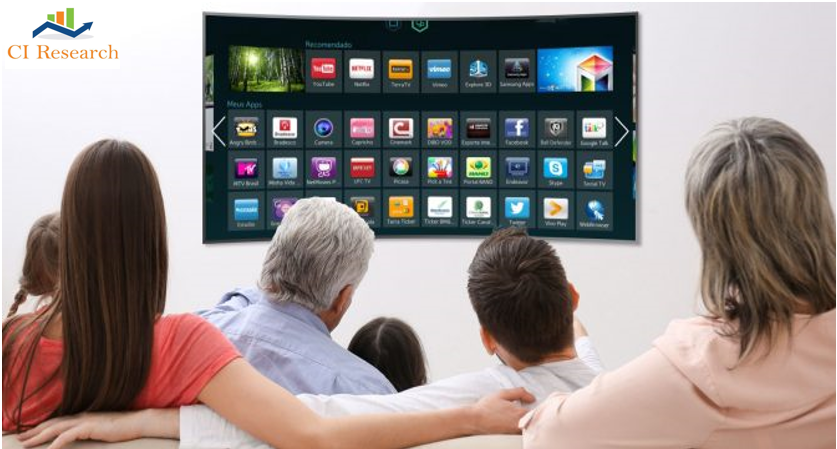
If the television selection process is an interesting shopping journey, let’s take a look at how each step happens when a customer wants to buy a new television.
The first step is to determine why consumers want to buy the TV. The fact that there are almost all houses have televisions, but the number of TVs is still growing at about 10% per year on average; also, the brands are constantly improving their products with new technologies such as OLED, QLED, SUHD, HDT … As the result, the only reasons for consumers behaviors are their needs to buy more TVs for other rooms in their houses or their needs to change their existing TVs with bigger screens and better technologies.
After determining the purposes of purchasing the new televisions, what will come next . Imagine how you're going to buy a new television. There will be a series of features displayed in the beginning: how much the screen is, what the price is, how the sound image is, the type of smart or conventional television, what technologies are .... Perhaps an important point is which brand is most suitable for the families’ needs. Then, the process of finding a brand of TV can confuse you because of the numbers of brands, and each brand has its own outstanding advantage. Moreover, the media advertising of TV appears in many different places. What is the right choice?
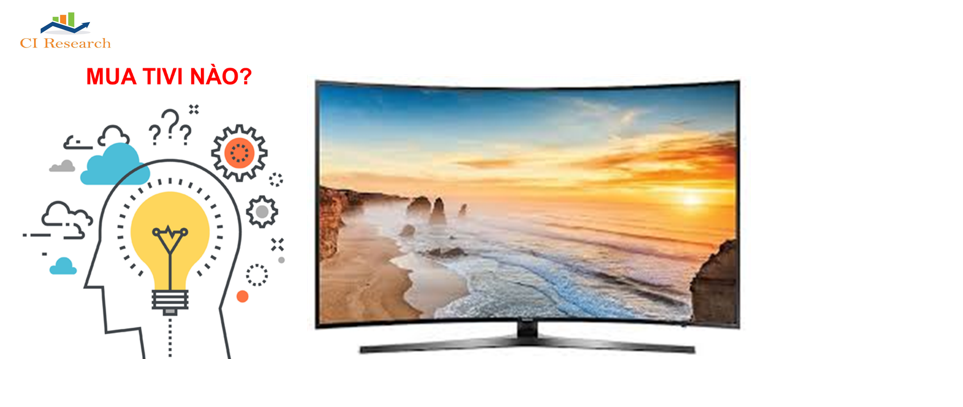
EXPERIENCE THE SEARCHING PROCESS OF PRODUCT INFORMATION
The fact that today most of customers do not need to come to the selling-points to see prices or products information. Instead, when the electronic age came to the throne, technology 4.0 opens that helps all those tasks could be done easily and conveniently when the customers just stay at home were and find information online. Most of information is available and helps customers to understand which parts are stand out of each brands. Customers can go to Google, Facebook, view pages and reviews of influential people (KOL, influencers) to find a lot of information to read, images and clips to see and what the new trends are to know... then decide whether to go to the stores to buy or not, or even order products from online stores.
A recent study conducted by CI Research Company with TV shoppers at electronics stores shows that 80% of customers tend to know one or more brands before going to the selling point, 20% of the remaining has random and unpredictable purchase decisions. To explain, TVs have many complex features, so it is difficult for consumers to distinguish the differences or outstanding pints of each brand. Therefore, before deciding to make purchases, more than two thirds of consumers will think about the brand that is available at home first, other refer to more from friends and relatives about other brands. That leads to the purpose of consumers has gradually changed. The store is the final destination for them to verify what they have heard is true or not. Also, this is the best opportunity for retailers to directly influence and dominate consumer buying decisions.

EXPERIENCE IN SHOPPING PLACES
How do producers impress and impact customers to get closer to their brands? The battles for customers not only takes place from the desks, but also marketing strategies, short-term and long-term media across many channel of advertising. Point-of-sale is one of the channels that significantly affects the final decision of a customer when purchasing a television. Nearly 25% of consumers find that the products they have bought out of plan are affected by the display in the store.
There are many studies show the correlation between the shopping behaviors of users and their senses from sight, hearing, smell, touch and taste. With technology goods, especially television, the first two senses are extremely important.

Visual is the most developed sense of humans with 83% of the information received by eyes. Therefore, the display of selling at the point-of-sale affects not only the consumer has entered the store, but it also helps convey the images and the value of the brands. Therefore, at the point-of-sale, manufacturers should display a lot of face-to-face advertisements with different forms from banner, billboard, colorful eye-catching illustrations. ... At the entrance to the gate to the inside of the store to attract customers.
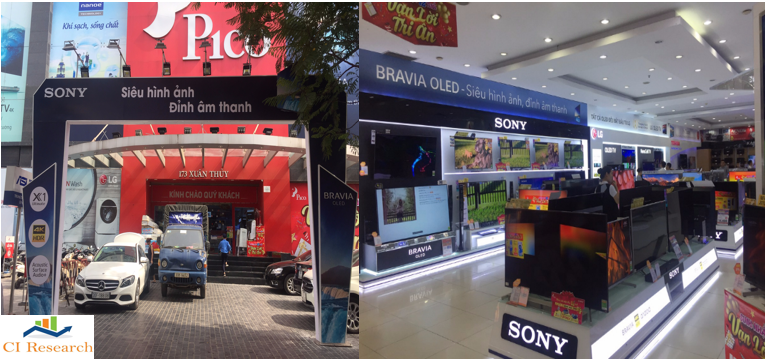
After the first impression, hearing is the second sense that helps users to receive and analyze information more carefully. Several studies prove it. A research by American professor Ronald L. Milliman in 1982 showed that songs with slow tempo stimulated shopping ability and increased consumer spending in supermarkets by 39%. In 2011, scientists at McGill University (Canada) said, when a person listens to music in a relaxed mood, his body will secrete substances that cause dopamine while stimulating shopping ability in the store. That's why so many retailers often use soft music, or the sound of TV clips to stimulate the hearing and imagination of the lively sound features, even turn it into a characteristic element as part of brand identity. Another type of sound that also has a great impact on customers is the introduction, offering products and caring customers from the staffs working in the stores.
Although the ads are impressive, when buying a television with a predetermined brand, the impact of visual elements is often lower than that of hearing, especially technology products. The advice of the staffs here is one of the "highlights" that partly affect the decision to choose a brand at the time of purchase. Because more than half of users need to hear, to know, and to understand more about the features and the really outstanding features of the type of product to be used on a regular basis. The staffs at the store should provide consumers with the useful knowledge so they can easily distinguish the differences in characteristics, superiorities, new features, technologies that they may not know, or have known through many sources, but need to understand what is really. Therefore, not too many people are affected by other factors, they choose the brand after hearing the advice of the sales staff and often change the original brand selected.
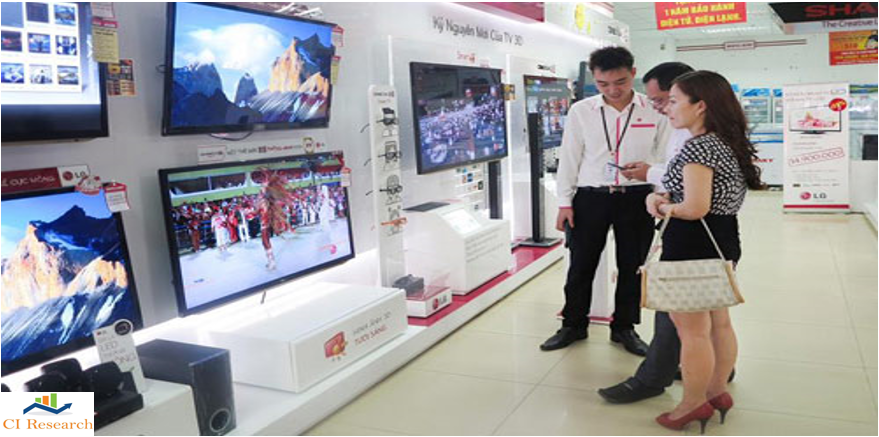
Therefore, the television brands need to invest in many aspects regularly in order to stimulate the shopping experience of customers. There are three important factors mentioned above. The first is the application of modern technology on both online and offline channels for advertising communication activities to motivate consumers to find and access more brands’ information based on applications such as YouTube, Facebook fan page, SMS messages, social network ... This customers behavior also helps the brand to capture the constant changing of demand behavior and have the direction to adjust products and services accordingly. Secondly, the brands should focus on advertising activities to display TV products at selling points with visual stimulation, attraction, clarity, convenience, time saving for customers, because this is the final point that affects the feelings and decisions of customers. The third is constantly equipping and improving knowledge, professional consulting skills for the sale team. Because these sales staffs will directly contact customers, capture and can "read" the psychological needs of customers through the act of choosing one or two items. From there, the safe staffs will make appropriate suggestions, clever compliments, and auditory stimulations for customers, and become "companions" with customers to make decisions faster.
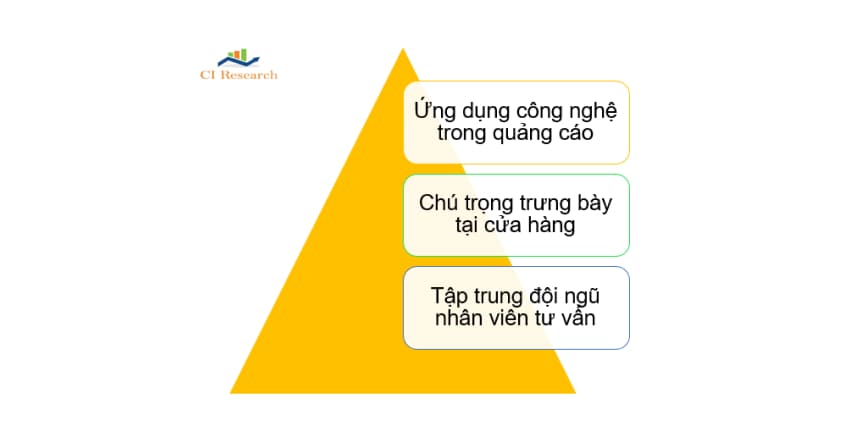
In conclusion, this report shows that customers who buy televisions are also increasingly focusing on more realistic elements, and more confident in deciding their own choices. However, unconsciously, they are also affected and by many factors, both direct and invisible that they are not aware, and think that it is their wise choice because they have clear intent on brand before buying. Therefore, customers television and product shopping journeys are an emotional experience that the brands can easily interfere with consumers' buying decisions if they hit the customers’ emotions. This will be one of the success factors that attract customers to know more about the brands.
Source: CI Research



